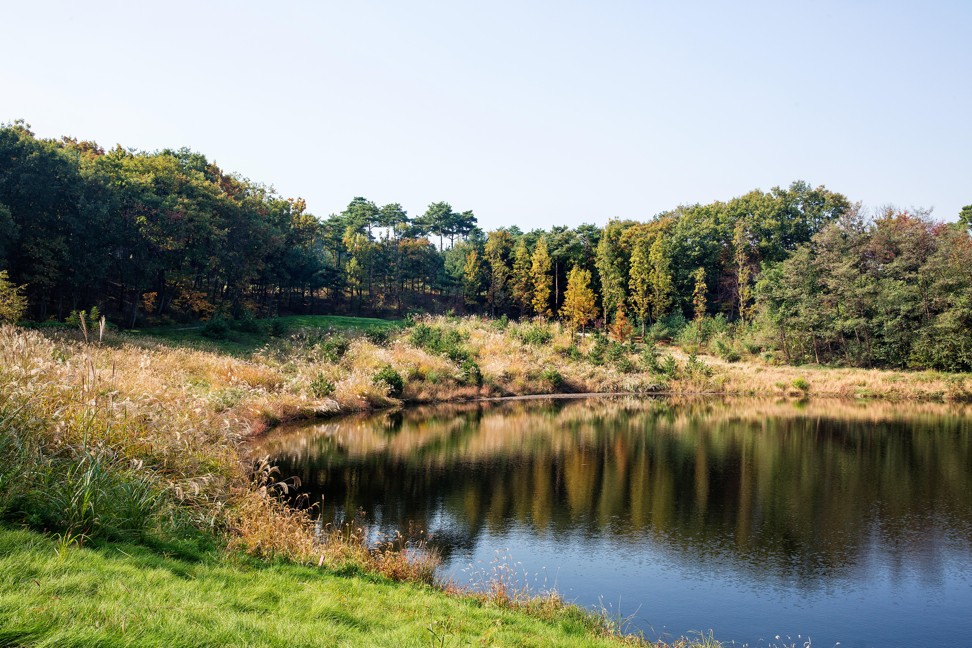How Asian golf courses are going green

The Asian Golfing Industry Federation held its summit last month, and one of the key topics may strike you as unusual – it was sustainability.
The idea of making the sport eco-friendly may initially seem improbable, but the trend is picking up – not just across the region, but for golf at large.


In other Asian territories – Singapore, Hong Kong, Japan – the problem is as much one of land scarcity, and small wonder when a course takes up, on average, the equivalent of about 60 football pitches.
Certainly, in many respects the explosion of golf – by some accounts it is the world’s fastest growing sport, in terms of participation – has broadly been environmentally challenging. Critics have complained that the so-called “Augusta Effect” – the expectation that a course should, like the famed championship venues, look picture postcard smooth and verdant – hasn’t just necessitated a carefree use of water; it has also meant the use of fungicides and insecticides, chemicals that run-off into local water courses. Then, they say, there’s the loss of plant and wildlife and their habitats.
“Is there a clash of image? Yes, probably,” concedes James Hutchinson, sustainability executive for the British and International Greenkeepers Association, a leading voice in bringing change in this area. “I think we still see sustainable as a thing where greenkeepers in muddy wellies collect recycled stuff and reuse it elsewhere on the course. And in terms of golf being elitist, who can blame the golfer for wanting a super playing surface after they have paid a lot for it? But at what cost to the environment and health of others? Golf courses are changing and we have to adapt or lose out I’m afraid.”
After going through a cowboy building phase, golf in China is set to be one of the most sustainable businesses, because the government is watching
While Lynge argues that the call for more sustainable courses doesn’t just come from the increasing number of eco-aware under-30s now playing golf – “regardless of their age, a lot of golfers here are involved in industries that already understand the importance of sustainability,” he suggests – all the same the golf world is slowly responding.

Such moves, it’s argued, are even bringing benefits to golf – less abundant watering makes the playing surface firmer, so the ball is faster and smoother-running – and to the golf business, with cost savings, improved efficiencies and better PR; given golf’s luxury image, it brings it more in line with the wider luxury industry’s emphasis on sustainability too.
As Jonathan Smith points out – he’s CEO of the Golf Environment Organisation Foundation, which certifies courses around the world – “interest in environmental practice seems to be greater wherever there is the most climactic pressure. But in China, in particular, a growing interest in healthy lifestyles is being reflected in the desire to represent courses as healthy places to be. That said, the fact is that a lot of courses around the world still don’t report on their environmental standards at all, or not credibly”.
Golf facilities interested in becoming GEO Foundation-certified start by using a dedicated app to easily record practices, key data and highlights around nature, resources and community. Once the programme is complete, GEO assigns a specially accredited “Independent Verifier” who will assess the submission against the standard, often including a site visit, and provide ideas about opportunities for future improvement.
China, for all its breakneck pace of course building over recent years, has only four courses – out of an estimated 600 or so – that are GEO Foundation-certified, with another 12 working towards it and others, says the GEO Foundation, showing interest.
Singapore has only two GEO Foundation-certified courses; Vietnam has two working towards certification, and Thailand has seven. The US, in contrast, has 79 courses either certified or on their way to being so. So while interest in sustainability in golf across Asia might be said to be on the turn – last year the Royal & Ancient conducted a sustainability seminar in Japan and Korea that is set to move around Asia – there is some way to go. Ironically perhaps, the confusing situation in China – with, since 2015, authorities acting to close dozens of courses deemed to have breached the ban – may prove some kind of template going forward.
“China is a cautionary tale [for the rest of Asia],” Lynge argues. “With courses closed, those that remain might be said to have [tacit] government approval, so there’s room for a more optimistic view. After going through a cowboy building phase, golf in China is set to be one of the most sustainable businesses, because the government is watching.”
China is a cautionary tale [for the rest of Asia].
Some courses, of course, were faster to get their heads around an apparent contradiction. The first of the Chinese courses to win GEO Foundation certification, Jinji Lake Golf Club, in Suzhou, did so in 2011. At the time its manager, Michael Gu, highlighted the thinking that may have held the industry in the region back. The course was “a prestigious members club and tournament venue [with] a broad sustainability programme,” he said. “These activities are sometimes considered mutually exclusive. Jinji Lake is demonstrating otherwise.”
Other GEO Foundation-certified courses in China include Foshan Golf Club, Mission Hills Haikou Resort, and Xiang Shui Bay Golf Club.
GAME ON IN CHINA
The Chinese sometimes claim to have invented golf – a similar game was played 500 years before the modern form was pioneered in Scotland. But the first official golf club wasn’t established until 1896, sitting on what is now Shanghai’s People’s Square.
When the communists rose to power in 1949, however, golf was condemned as a bourgeois “sport for millionaires” and what courses there were quickly closed. It wouldn’t be until 1984 that the era of reform allowed the establishment of the first new course, inspiring a “Wild West” of building as local authorities sought to cash in on the potential boon to regional economies.
In 2004, the government – partly for ideological reasons, partly for environmental ones – banned the building of courses, and has more recently closed many of them. But, with continued investment and its own rising star golfers, all the same China looks set to embrace the sport as a mass leisure activity over the coming years.
Right now, Beijing Country Golf Club, Citic Lake Golf Club, Foison Golf Glub, Foshan Golf Club, Golden Dunes Golf Club, Kingswan Country Club, Mission Hills Golf Club Dongguan, Mission Hills Golf Club Shenzhen, Mystic Springs Golf Club, Nasha Golf Club, Sushou Sunrise Golf Club, Tongli Golf Club, and Wind Valley Golf Club are applying for GEO Foundation certification.
In Singapore, National Service Resort & Country Club and Sentosa Golf Club are applying for GEO Foundation certification.
In Thailand, golf clubs that are applying for GEO Foundation certification are Chiangmai Highlands Golf & Spa Resort, Chiangmai Inthanon Natural Golf Resort, Laguna Phuket Golf Course, Pattana Golf Club and Resort Chonburi, Phokeethra Golf Krabi, Springfield Royal Country Club, and Thai Country Club.
In Vietnam, the application list includes Laguna Golf Lang Club, Montgomerie Links, and Royale City Golf Resort Dalat.

Environmental factors are becoming important as expectations rise